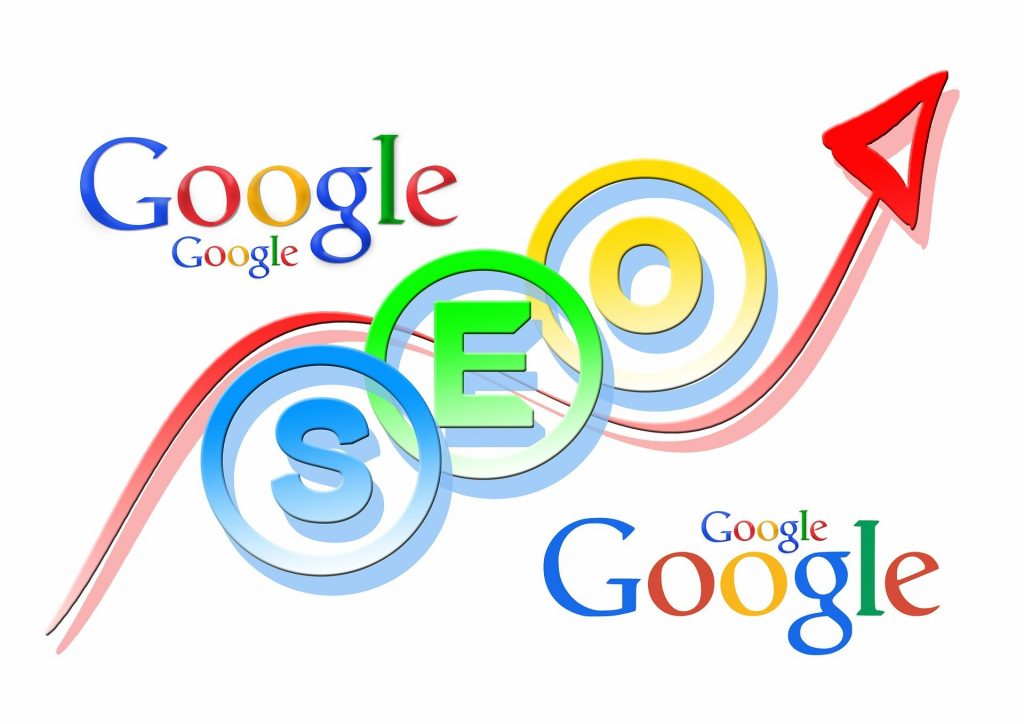The main concern for many of us is how to rank high on Google and hoe to do it fast. If you think about it google and other search engines are the main go-to place for website activity. In addition, on average 3.5 billion people search google a day. Furthermore making the importance of a high-ranked website that more appealing to us all. In this blog, we will be giving you tips on how to boost your traffic and rankings to enable you to rank first page on google.
The best way to describe google is like a fine dining restaurant. Google knows how they like their food and how they want it served. In addition to this google has a fully automated search engine that explores the web to find the best websites and content to rank first page. When and how they determine first-page content is not 100% know to anyone. However, there are many tricks you can undertake to make your content more desirable.

How to rank first page with google
We’ve all found ourselves wondering how to rank your page higher on google. With great content and good links within a blog post, we still wonder why the page is not ranked highly on google. The question to ask is the best way to make google like your content in order for it to rate high in SERPs.
Google is always making changes to their algorithms. These changes tend to be significant however the algorithm changes always reflect a shift in the direction the SEO travels in. Depending on the industry your in you’ll need to pay attention to the SEO changes and how to rank highly when these changes occur.
Let’s take a look at key tip that will you improve your SEO and rank first page on google.
Here are my Free Ways to Get on the First Page of Google!

High-quality content
Since the search engine first launched, the Google algorithm has been a well-kept secret. In order to succeed in the SEO industry, many of us have to make a well-educated guess at the criteria needed. In addition to this google regularly changes its algorithm in order to make the search engine better.
Google algorithms are mainly designed for analyzing content and its ability to satisfy the user’s journey. To put this into simple words rather than keyword targeting google is now favoring content that solves problems and answers questions. Meaning the deeper and more valued your content the higher it is likely to be ranked.
There are many benefits to creating high-quality content on your site. Firstly high-quality content will enable your website rankings to shoot up. This is because you’re providing valued content for the user making it more likely for them to stay on your page for longer. You’re also likely to have more repeat visitors to your site and a much lower bounce rate.
When writing high-quality articles there are many categories you need to consider these are:
- Search intent
- Affluent Snippets
- Keyword Research
- In-depth Articles
Search Intent
The way in which search intent works is by checking the goal of the person using the search engine. A good example would be the reason why a user has search for a particular category or keyword and how they intend to use the results. Google will rank your page higher if it feels it meets the search criteria and answers the search intent of a specific query. Google is constantly improving on analyzing the search intent of users online and will continue to use this to rank pages. This is why it’s important to make sure your content really targets your industry audience.
Affluent Snippets
A snippet is an overview of the content of your webpage. Google Shows the user a sample of the content on your page allowing them to decide if the content is relevant without having the need to load the webpage. An affluent snippet is data added to the HTML of a site by the operator which allows search engines to get a better understanding of the webpage content.
Affluent Snippets are a great way of increasing the amount of time a user spends on your webpage and a great way to lower your bounce. The fact that a user has the ability to view the content of your page before loading it significantly lowers the bounce rate and ranks your webpage higher.
Keyword Research
The main way in which SEO’s used to be based in were keywords. Search engines would check the type of keywords, where they were placed, and how frequently they were used. This used to be a great way to determine the ranking of a site however in the past it had been known to provide irrelevant content to the user. This has meant that the search intent is more important than including a keyword in the content itself.
Even though Keywords are not as important as before, it does not mean they are redundant. Many of us will find that keywords are added to our content naturally and therefore still appear. Although keywords will not do much in terms of your SEO ranking there’s no need to try and build content by trying to avoid the use of keywords.
The keyword planner tool is one of the best ways to help you gain an insight in which keywords you want to maily focus on.
Build a site that works on mobile
Nowadays many of us are using different platforms to access google. Some of us only use mobiles or tablets and hardly even use desktops and laptops. As many of us are using different platforms it’s very difficult for search engines to tailor all their search results to specific screen sizes.
The content in which is needed for a desktop screen is different to what is needed for a mobile or a tablet. For organization reasons there;s less space available on a mobile version of a website then on a desk top version. Other things you need to be aware of is the way in which your content is displayed on a mobile or tablet will be very different to a desk top due to the space.
Recently we have been told that more and more searches are appearing on mobile devices than before. This has resulted in content ranking higher on mobile devices than others. It was once the case that website content would rank well on all devices no matter how well suited it was to once over the other. However this no longer the case.
Why is this differentiation so important?
There are many reasons in which organizations try to avoid mobile optimization. Some businesses don’t feel the need for mobile sites as they may not receive much traffic on mobiles. No matter how much traffic you receive on a mobile it still adds to the overall ranking of your website. It also increases your visitor numbers even if it happens to be as little as one or two a week.
Google has now started basing the ranking on how mobile-friendly your site is. This does not necessarily mean you need a mobile site to rank your page higher with Google. However, it does mean that your site has to be mobile-friendly should you have a mobile site in place. It will be very hard for your page to rank if it’s not mobile-friendly so always bear this in mind. If you’d like to see how mobile-friendly your site is check out Google’s mobile-friendly test. This will show how mobile-friendly your site really is.
There are some companies that do not require a mobile site to improve their rankings. A great example is B2B sites as their mobile traffic tends to below as they are mainly used at work through desktops. You’re no longer ranked on the number of mobile visitors you get but the friendliness of your site on a mobile. It’s important that all companies pay attention to these changes as it can seriously impact the ranking of your site.
When designing your mobile site it’s important you check the usability of your site on a mobile device. The main things to check for is the design of the mobile site, how responsive the site is, and how easy it is to navigate on an around your site on a mobile site.
Superb on-page optimization
There are many aspects on your webpage you need to consider to achieve excellent on-page optimization. It’s important you achieve great on-page optimization as it adds to the overall SEO rankings and can significantly improve them. Things you’ll need to consider are :
- Headings and Subheadings
- Internal and External links
- Title tags and Meta descriptions
- Schema mark-up
Headings and Subheadings
Headings and Subheadings are an important part of SEO rankings. They allow users and search engines to know the real content and context of the text. They also break up paragraphs making it easier for the user to read rather than having to read long paragraphs which can seem like your waffling. The best way to describe headings and subheadings is like signposts directing the visitors to specific topics within your page. This makes it easier for them to understand the main content of the page. You need to make sure your headings and subheadings are clear. As well as relevant to the topic in order to rank highly on Google ratings.
Internal and External links
The main difference between internal and external links is that internal links are hyperlinks to other pages within your website. However external links are links to other websites outside of yours. It’s important to have a good amount of internal and external links within your page as it allows users and search engines to find your site a lot easier.
Internal links can help Google understand the structure and content of your site whereas external links can help build your brand awareness. You need to make sure the external links are from trustworthy sites if you want your page to rank higher with Google.
Title tags and Meta descriptions
The title tag specifies the title of your webpage in an HTML format. The title tag is displayed on the search engine results. This is the tag users will click to enter your webpage. These tags are important as they can be used for SEO rankings, Socal media sharing, and overall usability of your site. Your title tag is an important part of the SEO as it determines the main content within your webpage. Therefore it’s important that its an accurate description of the contents within.
The meta discretion is a little different from the title tag. The meta description is a 155 character long snippet that summarizes the content of your web page. The description is only shown by the search engine if the searched-for phrase appears in your meta description. Therefore you must match the description of your page and include your focus keyword within it.
Schema mark-up
The best way to describe Schema mark-up is by describing it as a code that allows Google to identify key information from each page on your website. This is great for the SEO ranking as it makes the user experience more enjoyable and allows them to find the content they’re looking for more easily. Use Googles Structured Data Testing Tool to check your schema mark-up.
Secure your website
This in my opinion is one of the simplest ways to increase your SEO rating. Just by simply changing your web address from HTTP to HTTPS can improve your SEO rankings. If the web address for your site does not start with HTTPS google will identify it as ‘not secure’. Google has been determining the security of sites since 2017. This is very important when thinking of your SEO ranking. By setting your web address to HTTPS you will provide the user with 3 main levels of security protection. These are:
- Data Integrity– This enables the data on the website from being modified or corrupted.
- Authentication: This Guarantees the user is connected to the website they intend to communicate with and is not being diverted to another site.
- Encryption: Providing privacy of information by encrypting the data that is exchanged with the user. This will keep all information safe.
Check your HTTPS security on your website using this cool tool from SSL Shopper.
Google has recently stated that webpage security is used in the ranking of their algorithm. This means it’s known that HTTPS sites will increase your SEO ranking. These are likely to rank higher with search engines. It’s also known that if a user is met with an alert from Google that your site is not secure they are less likely to stay in your site.
As well as the Security of your website improving your SEO it can also reduce the bounce rate to your site. This will also improve your SEO rating as well. This means that users are more likely to stay on your site if it’s deemed as secure. In simple teams, the bounce rate of your site is determined by the number of users that go to your site and stay or move on to another page without leaving. Higher bounce rates mean that users have not engaged with your site enough to stay. There are many studies that determine the percentage of bounce rate your site should receive. A study by GoRocketFuel a bounce rate of 26-46% is healthy for your website.
One of the best ways to increase the amount a user spends on your page is my motioning it. If you feel that your bounce rate is too high there are many things in which you can consider. You can try different languages, different content, and even different headings. The speed in which your site loads will also determine whether or not the user will stay. The slower your page loads the more likely a user will get fed up and leave. Having large amounts of images or larger images on your page can slow it down. On average your webpage should load between 1-3 seconds.
Improve the user experience and site architecture
Whether you’re optimizing the content search on a desktop or mobile. Choosing detailed content that fulfills the requirements of a user search is very important. Google has recently changed its algorithm to be aimed at the user experience making this even more important.
Improving your SEO rating will also improve your user experience as it will help users find the content they are looking for more easily. The more appealing your site is to a user the more appealing it is to search engines. This makes it important to have good architecture and navigation on your site.
There are many ways in which you can make the hierarchy of your site better. It’s important that the structure and navigation of the site makes it easy for the user to access the content they are looking for. Also, how you structure your website should make the information on your page easily available and simple to access. Having complicated headings and stuctures to your site can discourage users from wanting to stay or even revisit your site.
Good architecture does not only lower your bounce rate and keep users on your site for longer but also enables search engines to find your site easily. On average a user should be able to find the page they are looking for on your site within 3 or 4 clicks.
Read more on my other SEO blog posts to help you further with your SEO success.
- SEO for Bloggers: Here’s What Works
- Can You Make Money With a Free Blog?
- From Total Beginner to Full-Time Blogger: How I Did It
- Got a Website? Now Get It Working for You!
In Conclusion
as you may know there’s no real success recipe you can follow. However the best way path to take would be by experiment. You’ll soon get to know what works well for you and really bring you success. All of the above content has come from Google itself however no one really knows the full SEO ranking criteria. You will however benefit for using the above criteria and see a dramatic increase in your SEO ranking.
Although we don’t really know the likes and dislikes of Google there are many things you can avoid doing to avoid getting in trouble. We’ve told you the best things to do and we now have a list of things to avoid these are:
- Doorway pages
- Creating pages with little or no authentic content
- Loading pages with irrelevant keywords
- Deliver automatic queries to Google
- Badware
- scrapping
- Convert links and text
If you manage to stick to the above content and avoid the list above you’ll definitely be on your way to ranking first page on Google.


